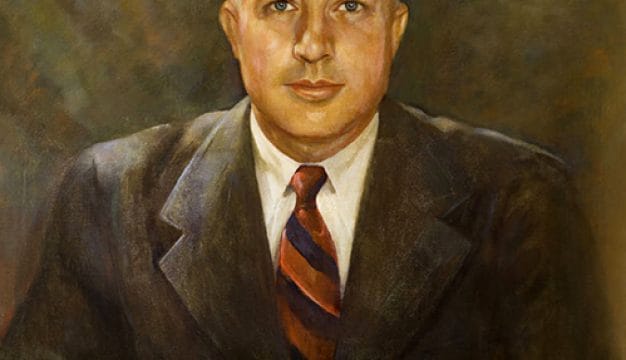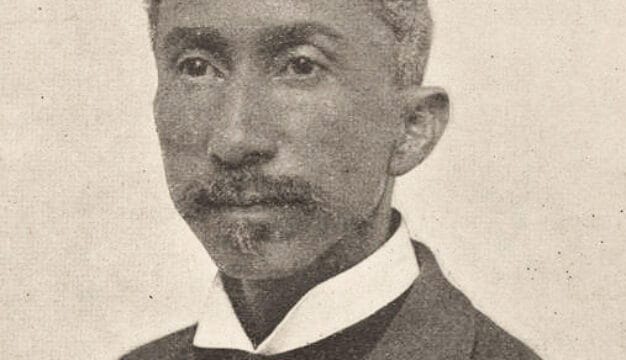Lafayette's Visit to Alabama
 Marquis de Lafayette
In 1825, Alabama was honored by a visit from Marie-Joseph Paul Yves Roch Gilbert du Motier, Marquis de la Lafayette (1757-1834), the last surviving general of the Revolutionary War. The former aide to Gen. George Washington was in the midst of a tour of all of the U.S. states in honor of the nation’s 50th anniversary in 1824-25. Lafayette had first come to America from France 47 years earlier to support America’s war for independence from Great Britain. At the age of 20, Lafayette was made a major general and served with distinction on Washington’s staff, fighting in important battles at Brandywine in Pennsylvania and Yorktown in Virginia. Upon returning to France after the war, Lafayette became embroiled in the French Revolution and ultimately had to flee France because of his opposition to the excesses of the revolutionary Jacobin Party.
Marquis de Lafayette
In 1825, Alabama was honored by a visit from Marie-Joseph Paul Yves Roch Gilbert du Motier, Marquis de la Lafayette (1757-1834), the last surviving general of the Revolutionary War. The former aide to Gen. George Washington was in the midst of a tour of all of the U.S. states in honor of the nation’s 50th anniversary in 1824-25. Lafayette had first come to America from France 47 years earlier to support America’s war for independence from Great Britain. At the age of 20, Lafayette was made a major general and served with distinction on Washington’s staff, fighting in important battles at Brandywine in Pennsylvania and Yorktown in Virginia. Upon returning to France after the war, Lafayette became embroiled in the French Revolution and ultimately had to flee France because of his opposition to the excesses of the revolutionary Jacobin Party.
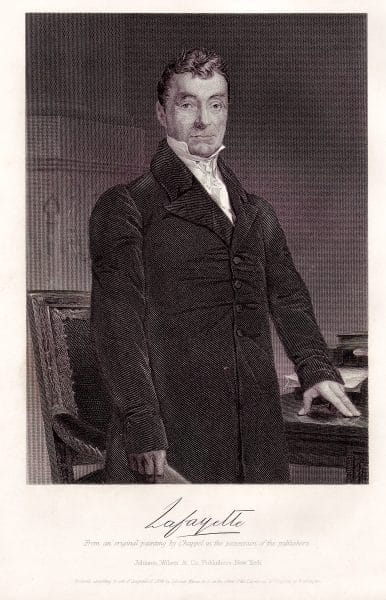 Marquis de Lafayette
Lafayette served in the 1787 Assembly of Notables, an advisory group to the king of France that worked for governmental reform, and served as commander-in-chief of the French National Guard from 1789 to 1791. After raising the ire of the French government, Lafayette attempted to escape to the United States but was captured by Austrian authorities and imprisoned until September 1797. Lafayette returned to France in 1800. In 1818, he was elected to the French Parliament, where he served until 1824 as a leader of the opposition party and promoted such liberal measures as freedom of the press and religious tolerance. After losing his seat in Parliament, Lafayette accepted an invitation from Pres. James Monroe in 1824 to make a grand tour of what were then the 24 U.S. states. The invitation was extended not only to honor Lafayette’s service to America but also to expose a new generation of Americans to the “Spirit of 1776.” Lafayette’s extended tour began on August 15, 1824, when he arrived at Staten Island, New York. The Alabama General Assembly passed a joint resolution officially inviting Lafayette to Alabama, and Gov. Israel Pickens issued a formal invitation in late December 1824. The announcement of Lafayette’s visit created great excitement in Alabama. The legislature authorized the payment of entertainment expenses out of public funds and Governor Pickens selected planning committees for lavish festivities to be held in Montgomery, Cahaba, and Mobile. To ensure Lafayette’s comfort during his travels, refreshments and supplies were cached along the route for the entourage.
Marquis de Lafayette
Lafayette served in the 1787 Assembly of Notables, an advisory group to the king of France that worked for governmental reform, and served as commander-in-chief of the French National Guard from 1789 to 1791. After raising the ire of the French government, Lafayette attempted to escape to the United States but was captured by Austrian authorities and imprisoned until September 1797. Lafayette returned to France in 1800. In 1818, he was elected to the French Parliament, where he served until 1824 as a leader of the opposition party and promoted such liberal measures as freedom of the press and religious tolerance. After losing his seat in Parliament, Lafayette accepted an invitation from Pres. James Monroe in 1824 to make a grand tour of what were then the 24 U.S. states. The invitation was extended not only to honor Lafayette’s service to America but also to expose a new generation of Americans to the “Spirit of 1776.” Lafayette’s extended tour began on August 15, 1824, when he arrived at Staten Island, New York. The Alabama General Assembly passed a joint resolution officially inviting Lafayette to Alabama, and Gov. Israel Pickens issued a formal invitation in late December 1824. The announcement of Lafayette’s visit created great excitement in Alabama. The legislature authorized the payment of entertainment expenses out of public funds and Governor Pickens selected planning committees for lavish festivities to be held in Montgomery, Cahaba, and Mobile. To ensure Lafayette’s comfort during his travels, refreshments and supplies were cached along the route for the entourage.
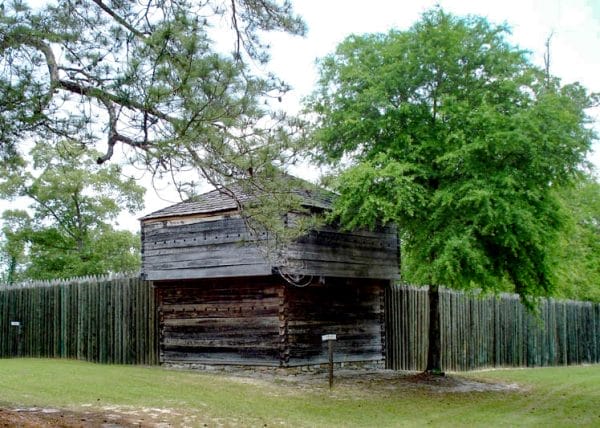 Fort Mitchell
Lafayette and his party, which included his son George Washington Lafayette, toured the northern and eastern states in the fall of 1824, including stops at Monticello to visit Thomas Jefferson and Washington, D.C., where he was received at the White House by Pres. James Monroe. Lafayette begin his tour of the southern states in March 1825, arriving at the Fort Mitchell crossing of the Chattahoochee River on March 31. His entourage was met in Alabama by a military escort and a welcoming party that included former congressman Bolling Hall, John Dandridge Bibb (brother of Alabama’s first two governors), and Gen. Sam Dale, hero of the “Canoe Fight.” Because Lafayette entered Alabama in what was technically Creek territory, and owing to a recent treaty controversy, Pickens placed Gen. Thomas S. Woodward, who was himself part Creek, in charge of an Indian escort through the region. Woodward included a detailed account of the visit in his Woodward’s Reminiscences, a collection of his personal observations of events in the history of early Alabama.
Fort Mitchell
Lafayette and his party, which included his son George Washington Lafayette, toured the northern and eastern states in the fall of 1824, including stops at Monticello to visit Thomas Jefferson and Washington, D.C., where he was received at the White House by Pres. James Monroe. Lafayette begin his tour of the southern states in March 1825, arriving at the Fort Mitchell crossing of the Chattahoochee River on March 31. His entourage was met in Alabama by a military escort and a welcoming party that included former congressman Bolling Hall, John Dandridge Bibb (brother of Alabama’s first two governors), and Gen. Sam Dale, hero of the “Canoe Fight.” Because Lafayette entered Alabama in what was technically Creek territory, and owing to a recent treaty controversy, Pickens placed Gen. Thomas S. Woodward, who was himself part Creek, in charge of an Indian escort through the region. Woodward included a detailed account of the visit in his Woodward’s Reminiscences, a collection of his personal observations of events in the history of early Alabama.
As Lafayette’s Georgia escort arrived along the east bank of the Chattahoochee River, they were met by Chilly McIntosh, son of Creek leader Gen. William McIntosh, leading 50 Creeks who later ferried the party across the river and carried members to the top of the bluff. When Lafayette arrived, the Creeks greeted him with a war whoops, and McIntosh introduced him to Bolling Hall, who delivered a short official welcome. Dandridge Bibb then delivered a more formal and lengthy welcome, and the Creeks entertained Lafayette with a game of stickball. After the game, Lafayette’s party traveled just a few miles before spending the night at a tavern run by Haynes Crabtree.
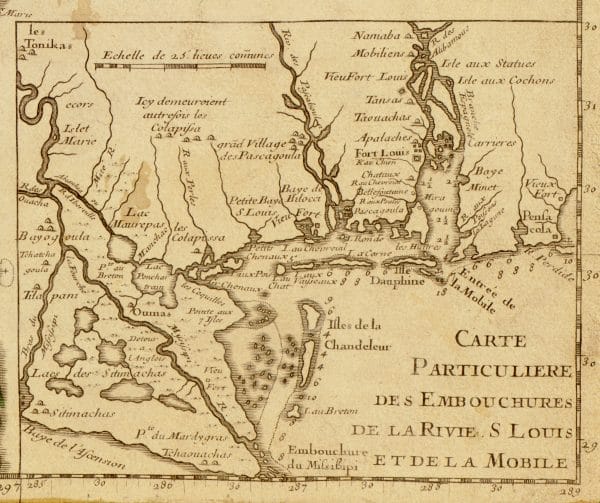 Map of French Louisiana
The next morning, the party set off down the Old Federal Road en route to Montgomery. In a grand procession through Creek territory, cavalry troops and 100 Creek horsemen escorted Lafayette, who rode in an elegant carriage. That night, some of the party stayed at Kendall Lewis’s Tavern, but Lafayette traveled several miles further west to Warrior Stand, the homestead of the recently deceased Creek leader Big Warrior. The next day, the procession continued to Line Creek, the boundary between Creek territory and Alabama state land. At this point, the Creek horsemen departed the entourage, and the remainder of the party lodged at Walter B. Lucas’s tavern just across the creek. Lafayette entered Montgomery on April 3 to the serenade of bugles and French horns and was greeted by a crowd of some 3,000 people at Goat Hill, now the site of the current capitol building but on the outskirts of the city at the time. A band played “Hail to the Chief,” and Lafayette was introduced to the official Montgomery delegation, led by War of 1812 veteran Col. Arthur Hayne, and welcomed in an address by Gov. Pickens.
Map of French Louisiana
The next morning, the party set off down the Old Federal Road en route to Montgomery. In a grand procession through Creek territory, cavalry troops and 100 Creek horsemen escorted Lafayette, who rode in an elegant carriage. That night, some of the party stayed at Kendall Lewis’s Tavern, but Lafayette traveled several miles further west to Warrior Stand, the homestead of the recently deceased Creek leader Big Warrior. The next day, the procession continued to Line Creek, the boundary between Creek territory and Alabama state land. At this point, the Creek horsemen departed the entourage, and the remainder of the party lodged at Walter B. Lucas’s tavern just across the creek. Lafayette entered Montgomery on April 3 to the serenade of bugles and French horns and was greeted by a crowd of some 3,000 people at Goat Hill, now the site of the current capitol building but on the outskirts of the city at the time. A band played “Hail to the Chief,” and Lafayette was introduced to the official Montgomery delegation, led by War of 1812 veteran Col. Arthur Hayne, and welcomed in an address by Gov. Pickens.
After the official welcome, Gov. Pickens reported that any further celebrations would cease owing to the fact that it was Sunday. Lafayette then enjoyed a private dinner, attended church service, and spent the night in the home of John Edmondson. The following day, he was feted with a public dinner and then a ball at Freeny’s Tavern, located at the corner of present-day Tallapoosa and Commerce streets. Exhausted from his travels, Lafayette left the ball early, and his party boarded two steamboats, the Balize and the Henderson, which would carry members down the Alabama River to their final stops in the state.
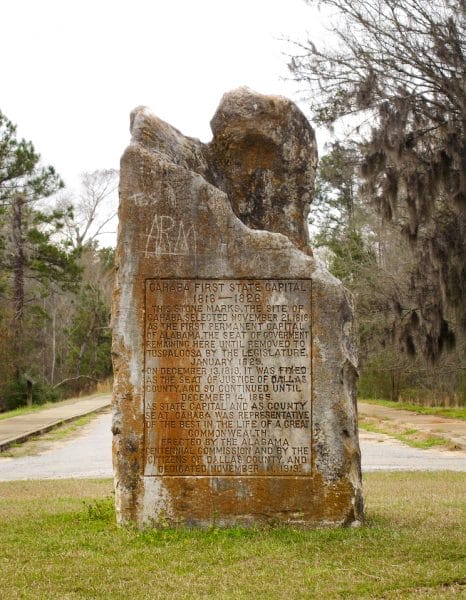 Old Cahawba Centennial Monument
On April 5, the flotilla made a quick stop at Selma so its citizens could meet the legendary figure. The party next stopped at Cahaba, then the state capital, where Lafayette was treated to another lavish reception. A band played “Lafayette’s March,” and Alabama’s attorney general Henry Hitchcock delivered a welcome address. Interestingly, Hitchcock was a grandson of Lafayette’s wartime friend, Gen. Ethan Allen of Vermont. Lafayette and his party enjoyed a formal reception and public barbeque dinner at the state house and met with some of the French settlers of the Vine and Olive Colony, located near present-day Demopolis in Marengo County.
Old Cahawba Centennial Monument
On April 5, the flotilla made a quick stop at Selma so its citizens could meet the legendary figure. The party next stopped at Cahaba, then the state capital, where Lafayette was treated to another lavish reception. A band played “Lafayette’s March,” and Alabama’s attorney general Henry Hitchcock delivered a welcome address. Interestingly, Hitchcock was a grandson of Lafayette’s wartime friend, Gen. Ethan Allen of Vermont. Lafayette and his party enjoyed a formal reception and public barbeque dinner at the state house and met with some of the French settlers of the Vine and Olive Colony, located near present-day Demopolis in Marengo County.
After a brief stop at Claiborne in Monroe County, where the party attended a public reception at the courthouse and the laying of the cornerstone for a Masonic Lodge, Lafayette and the others pressed on to Mobile, arriving there on April 7, 1825. Lafayette was just as regally received and extravagantly entertained in Mobile as he had been elsewhere on his journey through the state; a banquet and ball held that evening at a hotel on Royal Street drew more than 600 spectators. The next morning, Governor Pickens accompanied Lafayette by steamboat down Mobile Bay to Mobile Point, where he joined an official welcoming party from Louisiana. He boarded the luxurious steamer Natchez, which took him to New Orleans to continue his tour of America.
Although Alabamians treated Lafayette’s visit with enthusiasm and fanfare, the visit was in fact a severe financial burden for the state. The total cost approached $17,000, which was quite a strain on the limited resources of the new state considering it only spent $10,000 to build the capitol building at Cahaba. The state’s bill would have been even greater had the members of the military escort not paid their own expenses. Nevertheless, Lafayette’s visit to Alabama exposed its early citizens to a world beyond the confines of its frontier borders. The excitement it generated prompted numerous inhabitants of isolated areas of the state to travel hundreds of miles to Montgomery, Selma, Cahaba, Claiborne, and Mobile, to see America’s most prominent foreign dignitary. Among these were a few veterans of the American Revolution, who came to pay respects to their old comrade in arms.
Further Reading
- Bridges, Edwin C. “‘The Nation’s Guest’: The Marquis de Lafayette’s Tour of Alabama.” Alabama Heritage 102 (Fall 2011): 8-17.
- Levasseur, Auguste. Lafayette in America in 1824 and 1825; or Journal of a Voyage to the United States. Translated by John D. Godman. New York: Research Reprints, 1970.
- McWilliams, Tennant S. “The Marquis and the Myth: Lafayette’s Visit to Alabama, 1825.” Alabama Review 22 (April 1969): 135-146.
